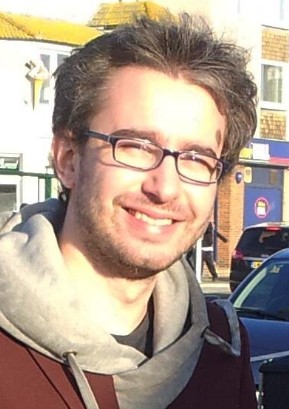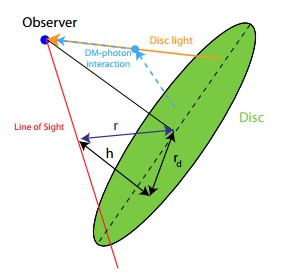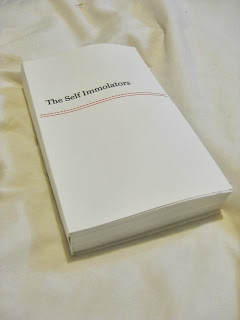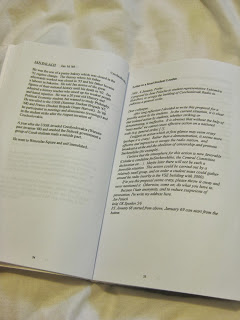[youtube id=”fSqAY5wZJ8I” align=”center” mode=”normal” autoplay=”no” maxwidth=”1000″]
 The Speaker Editors
The Speaker Editors
Russia, Ukraine and the West on the psychiatrists couch?
Wouldn’t it be much better if the Russians could be great friends with us in the West? It’s in our mutual interests, especially with the shared challenges we face together, yet we are getting ever more deeply locked in mutual antagonism and there is a risk that the war in Ukraine might escalate out of control. The West acts as if Russia’s actions in the Ukraine are a surprise to us. Yet, they are very predictable if we are honest about human nature. Russia’s obsession with conflict with the West is a massive strategic error on its part. Like the guns of the doomed British Empire in Singapore, Russia is looking the wrong way. Their critical threats come from the South, East and internally from their own mindset.
So what’s going on? There are many layers to this. Let’s look at it through the lens of some of the clauses from “The New Magna — Psychiatrist’s Prescription for Western Civilization.” It’s a vision and strategy to rejuvenate the West.
4.1 Be conscious of our values and promote their healthy expression, adapted to the task and situation.
We in the West have become naive, spoiled by the freedoms and prosperity of our comfortable liberal democracies. We take survival, security, power, freedom, justice and stability for granted to the degree that we neglect them and fail to see them operating in others. We naively assume that everyone else thinks like us, has the same values and perceptions. We have tried to draw Russia into our economic orbit and to exert influence on their society to become liberal and pluralistic like ours. We have chosen to pick a fight with the Russians over gay rights, forgetting how recently it is that the West has converted to that way of thinking. Russia remains a very conservative country with a strong patriotism which we have long since discarded. The centre of gravity of their mindset remains patriotism and power which our political class mostly no longer understands. The Ukraine was an integral part of Russia for 800 years-as old as our Magna Carta. Is it any wonder that when they perceived the West trying to draw Ukraine into the EU and NATO that they would feel threatened and violated.
4.3 Manage the dark side of human nature.
The shadow side of power and pride is shame, addiction and victim mentality, all of which have a powerful place in the Russian consciousness. Losing an Empire is painful. The Persians still mourn theirs. The British are still in denial. Russia lost not only an Empire, but its whole meaning and identity when Soviet communism collapsed. It’s only natural to be nostalgic for the good old days of certainty, patriotism and righteousness. President Putin feels that shame and deep loss in his core and is determined to restore Russia’s self-respect. A sense of resentment and violation is the most powerful motivator of violence. If someone feels violated and insecure, they can be very dangerous. It’s wise to see that coming and act accordingly.
6.3 Identify common values and superordinate goals
What is surprising is the Russian government’s poor analysis of the true threats to their country. The Kremlin PR machine spews out a daily diet of anti-Western propaganda to whip up their people into a nationalist frenzy. Meanwhile the real and true threats to Russia grow unnoticed. Many Russians are drinking themselves into an early grave and, like much of the West, failing to have enough children to secure their future. Whilst their missiles face West, they seem blind to the cauldron of religious fundamentalism to the South. The Chinese Empire has its eye on Siberia. They aren’t taking it with tanks and bombers. They are taking it by stealth with migrants and traders simply walking across the border and laying down roots. Siberia is rich in resources and empty of people. China is brimming over with people and hungry for resources.
6.7 Practise empathy
In global terms, Russia is actually a Western country. It has a very distinct culture and history, but fundamentally they are Europeans. Yet we in the West treat Russia like the dysfunctional cousins at the family wedding. They crave our acceptance, but know that we will never accept them as equals. Russia craves respect, like an awkward teenager. They opened up to us when communism collapsed and we infected them with a brutal and corrupt form of capitalism. We humiliated them by drawing former Warsaw Pact countries into NATO.
16.1 Invest a World War II level of effort in discovering and implementing abundant, cheap, clean, secure and renewable energy technologies
We have wasted a great deal of time and energy arguing over the existence or not of climate change. Meanwhile, we missed the vital importance of having control over our energy supplies. This has not been lost on Russia upon whom Western Europe is dependent for much of its gas supply. It’s hard to be assertive with someone who has his hands round your throat.
26.8 Respect others’ boundaries, identity and security
Imagine how England would feel if Scotland broke away and became dominated by Iran. Imagine how the US would feel if California became a Chinese client state. We simply would not allow it to happen and would do whatever it took to stop it.
26.17 Invest properly in defence – don’t freeload on others
The US has cut its military budget substantially since the crash of 2008. Western Europe has reduced its forces from small to joke-size. Since America became the dominant power, we have lived under their umbrella with the costs and benefits of playing second fiddle. Yet we are now freeloading and the powerful Russian military can see that there is not much behind our fig leaf. We need to dramatically increase our investment in defence.
What does this mean for Ukraine? Whether we like it or not, Russia is a very powerful nation and it considers Ukraine to be within its sphere of influence. For practical purposes, it is. Our principles of democracy and self-determination are excellent but they only exist where we have the power to enforce and defend them. Russia values Ukraine vastly more than does the West and is prepared to sacrifice much more. We have little to gain and much to lose. It is foolish to pick a fight you can’t win. We must make it clear that Ukraine is not going to join either the EU or NATO- unless one day Russia becomes our friend and they join us together. That sounds totally unrealistic right now, but events in the world may bring that about sooner than we imagine.
By Dr Nicholas Beecroft
Dr Nicholas Beecroft is a Consultant Psychiatrist who has spent 25 years exploring the worlds of Medicine, Psychiatry, Business, Leadership, International Relations, Politics, the Military and Spirituality. He created the Future of Western Civilization Series of interviews with visionary leaders. He is author of Analyze West: A Psychiatrist Takes Western Civilization on a Journey of Transformation.
The New Magna Carta is a bold vision and strategy to rejuvenate Western Civilization. On the 800th anniversary of the original “Great Charter,” Dr Nicholas Beecroft proposes a clear vision of who we are, what we believe, what we value, where we want to get to and the necessary steps to get there. It is intended as a living, evolving document to be continuously improved. Far from the pessimistic cynicism of our time, the New Magna Carta envisions a bright future.
Dark side of cognitive illusions explored in bias research
A cognitive bias, the “illusion of causality,” has been explored by a joint team of scientists who found that the bias isn’t limited to false beliefs about whatever was originally learned; later on, the bias can prevent new information from being learned — even when the original information is false and the newer information is true.

“Our ability to associate causes to effects is quite fallible,” Dr. Helena Matute, Professor of Psychology and Director of the Experimental Psychology Laboratory at Universidad de Deusto and lead researcher on the study, told The Speaker. “It often works well, but it very often is subject to illusions.”
The study involved two sets of student volunteers. The two groups witnessed drug treatment of different medical patients. The first group (called “high illusion”) witnessed many patients who had taken a drug — most of the patients recovered. The second group (“low illusion”) witnessed many patients who had not taken the drug — most of the patients recovered.
Both groups saw some patients who took the drug and some that didn’t, but each set saw more of one or the other. Across the board, around 70 percent of patients recovered, regardless of whether they took the drug or not.
The high illusion group more frequently concluded the drug had a helpful effect.
In a second round of experiments, both groups witnessed the same thing: half the patients received the drugs and half didn’t, and those who received the drug recovered 90 percent of the time, while those who didn’t receive the drug had only a 70 percent rate of recovery.
The high illusion group was less likely to recognize the drug’s effectiveness. The high illusion group thought that the recovery was due to the drug they had witnessed in the first phase of the study.
The researchers suspect that the high illusion group’s belief that the first drug was effective prevented the group from learning new information from the second round of experiments.
This study has relevance for false medical practices. It is important that people have exposure to true medical information early — before quackery gets a chance to reach them — Matute thinks.
“Yes, it is very important. But it might be even more important to provide people with excellent training on cognitive biases and cause-effect illusions, so that they will be interested in learning scientific methods, in general, not just related to medicine. And ideally, this should start quite early in life — maybe before 10 — and continue through life. The reason is that you cannot teach people all the details about medicine, present and future, and all the details about all other things they will need to know in their life. That is impossible. But if you teach them to think scientifically they have the tools to protect themselves against quackery and against many other frauds.
The researchers did a test for this, too, two years ago.
They convinced a group of teenagers that a metal wristband improved physical and mental abilities and that the teenagers should by the wristband.
The researchers next ran some the teenagers through a crash course on what had just happened. They told them about the weaknesses of the arguments in favor of the wristbands, explained the principle of baseline comparison, and taught them about causality illusion.
Afterwards, the researchers had the teenagers play a computer simulation in which the teenagers could administer a drug to patients to see if it was effective. The teenagers who had received the crash course ran more drug trials without the drug to see if the drug really was effective.
“Teaching scientific methods and scientific thinking to every one. Showing people that we are not ready to detect cause-effect relations on bare eyes, showing them that we all suffer illusions, that we often believe that A causes B when they are just co-occurring. Thus, teaching people that we need the help of controlled experiments to test whether a treatment is working. If there is no evidence supporting it, we should be aware we should not trust our personal experience, it is too biased.”
However, the illusion of causality can effect not just patients, but doctors, too.
“They are humans and are subject to identical cognitive biases as other people. They might feel that a treatment is working when it is not. But they have the scientific literature and reviews of current research to make sure whether treatment is supported by evidence.
“We need to be aware of these mistakes in order to be able to protect ourselves against them,” Matute concluded. “The only protection that we humans have developed about these cause-effect illusions is the scientific method. So, lets use it. And let’s teach everybody how to use it!”
“The dark side of cognitive illusions: When an illusory belief interferes with the acquisition of evidence-based knowledge,” was completed by Ion Yarritu, Helena Matute, andDavid Luque, and was published in the British Journal of Psychology.
AENA’s privatisation complete – global potential and global problems
MADRID, Spain — AENA, the world’s largest airport operator, has been floated on the stock market in Madrid. Josè Manuel Vargas, the company’s CEO, indicated in an interview with the Financial Times that the company’s entry onto the stock market preceded a wider move towards a more global reach for the company. However, while the privatisation and expansion of the operator reflects the demands of a more globalised world, it also is testament to the global nature of protests against austerity politics and conservative governments.
These movements, despite being diverse, are interconnected through public pronouncements of support for one another in spite of the fact governments from Greece, Ireland, Spain, and elsewhere try to push the idea that economy is recovering. Ireland is no long under the yoke of the IMF and much has been made of that by the ruling Fine Gael party there. In Spain, Mr. Vargas, in the aforementioned Financial Times article, held AENA up as the symbol of new economic growth in the country. In other words, the end of a very long economic crisis.
Spain and Greece are both countries with a political mood torn between the entrenched divisions between Left and Right. The Pablo Iglesias-led Podemos — the Obamaesque ‘We Can’ is how it translates — and Greece’s Syriza are sister organizations that are radically Left and united in a shared political ethos. The Greek party won power on January 25th and a few days later in the centre of Madrid, during a Podemos rally, spectators could be seen holding Greek flags. Podemos, preparing for the Spanish elections this year, also have parallels with Latin American movements also. What is more, they seek to nationalize key institutions. There are fears that, should Podemos win, that AENA’s privatization could be rolled back; such a move would be difficult but not impossible.
Syriza have also been making noise recently. They have come out in support of the water protests in Ireland and the party, speaking in Dublin, have declared that opposition to the privatization of water was ‘inspirational’ before attacking the mainstream media for failing to cover the protests fairly and ended by saying that grassroots movements had to stick together as ‘Greek people and Irish people face the same challenges from capitalism’. Podemos also share the sentiment that the main stream media do not adequately cover alternative views and Mr. Iglesias has his own YouTube show to compensate for what he perceives as inadequate coverage.
While the executives in AENA toasted the privatisation process with a cocktail reception in the stock market and talks of economic recovery, there will be those around the world sounding the caution that not everybody is convinced the good times are back and that, if they are, they will benefit everyone.
Analysis by Enda Kenneally
Researchers find short-lived model for long-life research in African killifish
A type of African fish that lives for only 4-6 months — ideally suited to its perpetually disappearing temporary habitat — has become a new model organism for the study of aging. Researchers at Stanford University are using new technology that allows them to edit specific genes in a series to understand some of the biggest challenges of modern biology, such as how complex characteristics like aging are encoded by genomes.

“We have created a resource to test the impact of genes on aging and age-related diseases in a rapid and high throughput manner,” Dr. Anne Brunet of Stanford University’s Brunet Lab, lead researcher of the study, told The Speaker.
“Our pipeline should allow rapid screening for genes that are important for modulating the aging process in an organism that shares a lot of characteristics with us.”
Traditionally, aging researchers have worked much with short-lived yeast, worms and other invertebrates in order to study effects across lifespan and across generations. But these creatures have little in common with humans, the primary consideration of the work of many researchers. Among the species more similar to humans, even the laboratory mouse lives 1 1/2 to 3 years.
The team used the African turquoise killifish, in which are combined both features shared with other vertebrates and relatively short lifespan — the fish complete the full course of their lives in only 4-6 months within temporary ponds of water that dry up when the seasons change in southeastern Africa.
The researchers used new genetic tools to create mutant killifish, which they have since made available to the entire research community.
“We decided to use the recently developed gene-editing technology called CRISPR/Cas9 to manipulate genes in the African killifish because this technology allows us to not only specifically delete genes, but also to precisely change a specific base pair in the genome. These are key steps in transforming an organism into a model system because they allow us to abrogate or specifically modify the function of key genes (aging and longevity genes) and then test the consequences of this on characteristic of interest (lifespan).”
The ability to edit and observe the changes of single genes is so important because a single gene can be the key to understanding the expression of many other genes.
“Lifespan is likely determined by a complex network involving many genes. That being said, it is also interesting to note that mutations in just one gene can drastically alter the aging process, which suggests that some genes are pivotal “nodes” in the network. It will be interesting to systematically dissect this network and identify the ‘hubs.'”
The wide variety of mutable killifish made available will provide scientists with fish they can screen for particular genes that may slow or speed up — or reverse — aging and age-related diseases.
“We have also developed this African killifish into a model organism that hopefully will be used by many, both in academia and industry, for potential therapies for aging or age related diseases,” Brunet told us. “Furthermore, there is an explosive amount of variations or mutations being identified in the human genome given the rise in personalized medicine (also known as precision medicine). So there is a need to understand the function of these variants at the organismal level, and this fish model could help do that in a rapid and high throughput manner.”
The report, “A platform for rapid exploration of aging and diseases in a naturally short-lived vertebrate,” was completed by Brunet et al., and was published in the journal Cell.
Sixth taste identified – fat
The sixth taste has been identified — fat. Deakin University scientists put fat through a series of tests to see if it met the strict requirements of a taste, and found conclusive evidence that fat made the grade. The findings could hold new promise in the fight against obesity.
“Research from animal and human studies provide conclusive evidence that there is fat taste,” said lead author Dr. Russell Keast, head of the Centre of Advanced Sensory Science at Deakin University. “For fat to be considered a taste it must meet some strict criteria, and it does.”
The last new taste to be recognized was umami in 1985.

“Five are widely accepted: sweet, sour, salty, bitter and umami,” Keast told The Speaker. “I am saying fat has convincing evidence to be called a taste.”
Keast explained how a taste “makes it” onto the list, and how fat passed the tests conducted at his lab.
“There must be a class of stimuli — fats or the breakdown products, fatty acids — that activate receptors on taste cells. A signal must be sent from the taste cell to taste processing regions of the brain. The signal that is decoded as a perception must be independent of the other tastes — not a combination of sweet and salt or any other possible combinations.
“We have established a test to evaluate people’s threshold for fatty acid — we present 3 solutions, one of which contains a fatty acid. The task is to identify which solution contains the fatty acid. If the subject is incorrect the concentration of fatty acid is increased and the test rerun. This continues until the correct solution is identifid multiple times.”
But fat is a taste that is different from the five more familiar tastes. It is unconscious. “No actual concious taste, so no ‘sweet’ or ‘salty.’ We know fat is there, but we cannot describe what it actually is.”
That is, food with fat can be sensed, as was demonstrated in the tests, but the difference of fatty food from food without fat is difficult to describe.
This unconscious taste is not fully understood. “We know it is different from a solution without the fatty acid, but cannot describe why,” Keast said.
Keast expects more tastes will follow fat onto the list.
“There will be others, kokumi, carbohydrate, and potentially many others. As we learn more about the molecular basis of taste, perhaps we have to revise the scope and defintion for taste.”
Keast pointed to the fight against obsesity as one of the most important areas where the research could be applied.
“This has important potential in applied research — particulary the development of foods that could be lower in energy (fat) yet still deliver the important taste effects of fat. We think that the taste component of fat, which was missing in many low fat foods developed prior to the current day, did not take advantage of this knowledge.”
The report, “Is fat the sixth taste primary? Evidence and implications,” was completed by Russell SJ Keast and Andrew Costanzo, and was published in Flavour Journal.
The Self Immolators (pdf eBook)
“The Self Immolators,” written in 2013 under the pen-name Day Blakely Donaldson.
Rights and permissions to use material in this book: the text, including translations, can be used under the Creative Commons licence. You can reprint sections of this book, but include a line noting the source and link the text “The Self Immolators” back to this page.
To read this book online, click this link: “The Self Immolators.”(same link as above) To download the book (in .pdf form), right-click the link and select “Save link as.”
Please comment on the subject below.
This book is looking for a publisher. Stipulations: in publishing and selling this book, no monetary gain will ever go to the writer or to The Speaker. It would be preferable if the publisher also did not profit from the book, but I understand this is unlikely to be accepted by publishers.
“The Self Immolators” was independently printed and distributed in a small limited edition free in 2013.
News articles related to the subject of this book:
Dark matter may interact with light, creating glow around galaxies and offering opportunity to “see” the elusive matter
The prevailing assumption about dark matter is that has no interaction with light, but European physicists who investigated a possible signature of dark matter at the edges of theM101 Pinwheel galaxy now believe that light may be interacting with dark matter to produce “light halos” — detectable glows around the edges spiral galaxies.
“Dark Matter can be a lot more interactive than previously thought,” Dr. Jonathan Davis of the Institut d’Astrophysique de Paris, an author of the report, told The Speaker. “So people usually think of Dark Matter particles as neutral and so devoid of any interactions with light, but we show that this need not be the case. Also, that it is important to be creative with ways of looking for Dark Matter as no one really knows how it should behave, or where a signal will show up first.”

“I think the idea of Dark Matter interacting with light is quite an exciting new field,” Davis told us. “Some people have looked on the effect of these interactions on the early universe. I think it would be interesting if there were future studies looking at other wavelengths of light with sensitive instruments, particularly the longer wavelengths where background light from stars should be less bright.”
The team observed the diffuse halos of light that are apparent at the outer edges of spiral galaxies — particularly the M101 Pinwheel galaxy, which they used as an example in the report.
The team theorized that light radiating from stars in that galaxy, if it was bouncing off dark matter on the outer periphery, would scatter around the galaxy in a particular way. An example used to convey the idea is that of a lamp glowing in fog.
“[The light] should be visible everywhere,” Davis stated. “The reason we focus on the edges of the galaxy is that this is where the light from stars should be dimmest. So although the DM glow is everywhere, it’s easiest to see at the edges as there is less competition with star light.
Scientists do not possess information by which the theory could be proven as of yet, and the observable patterns could also be explained as coming from other sources, Davis noted.
“At the moment there is no way of knowing if any glow is due to DM or stars. So we’re not claiming to have discovered anything yet. The galaxy we look at in our paper has a halo of older stars which make looking for a DM glow halo difficult. Indeed the glow in this case is probably due to those stars, but then you can’t rule out a DM contribution, which is what we show. However I think the emphasis should be on future dedicated searches for this light from DM scattering. If a dedicated search can separate the DM glow from other sources then they can really look for this signal, if indeed it’s there.”

There are several possible ways that the theory could be proven in the future, Davis explained.
“There are a few ways one could actually discovery DM-photon interactions for sure. Just through observations of galaxies if we saw a signal which had a very different dependence on the wavelength of light, compared to from stars or gas, then that would be interesting. Additionally if we discovered a signal of Dark Matter at the Large Hadron Collider or in Direct Detection experiments, that would be a big step forward.”
The report, “Glow in the Dark Matter: Observing Galactic Halos with Scattered Light,” was completed by Drs Jonathan Davis and Joseph Silk, and was published in APS Physics.
Images: from Davis’ report and from “First results from the dragonfly telephoto array: the apparent lack of a stellar halo in the massive spiral galaxy m101“
Islamic terrorists have committed 25,000 separate violent acts worldwide that resulted in hundreds of thousands of deaths in last 15 years
The number of Islamist attacks since 2001 when the World Trade Center’s twin towers collapsed has reached 25,000, according to terrorist watch group The Religion of Peace. The attacks currently occur regularly at a rate of over 200 per month around the world, so that the time at which the 25,000 mark would be reached was able to be predicted by TROP.
In January, Islamist terrorists committed 266 jihad attacks in 28 countries, including 43 suicide attacks. These attacks resulted in 2,998 deaths and 2,261 injured, not counting deaths and injuries that occured after the time the reports were published.
The numbers were almost the same over the past several months, so that when in early January The Speaker asked the editor of TROP, Glen Roberts, about the date at which the number would reach 25,000, he was able to predict that it would occur in February.
“It looks like there have been only 12 days since the beginning of 2005 without at least one Islamic attack,” said Roberts.
The TROP editor, who has maintained a record of Islamist attacks since the 9/11 attacks on the World Trade Center in 2001, noted that the number of attacks is the only figure they calculate. They do not calculate the number of people killed by Islamists, which would be many times higher than the 25,000 figure. The 25,000 does not include regular killings by Muslims such as honor killings, murders, or executions, but measures only killings deemed by TROP’s editors to have been motivated by the perpetrators’ interpretation of religious duty.
Roberts also told us that the rate of attacks since 2001 should in no way be considered an increase in such attacks.
“The rate at which people died from Islamic violence was probably much greater prior to this,” said Roberts. “There was less attention focused on terror campaigns in places like Algeria and East Timor, for example, even though the loss of life was staggering. Another example is Bangladesh, where several million people lost their lives in the early 1970’s during independence, a great many of whom were Hindu.”
According to TROP, Islam is unique among the world’s biggest religions in that killing is widespread and continues regularly. Roberts believes that the killing has to do with the scripture and history of the Islam.
“The people who know Muhammad best – his companions – were extremely prolific in waging war against non-threatening populations under the rationale that Islam is meant to be supreme,” Roberts told us. “There is nothing in the Quran that discourages this. In fact, verse 9:29 says that Christians and Jews are to be killed if they resist subjugation. Verse 9:123 tells Muslims to ‘fight those of the unbelievers who are near to you and let them find in you hardness.’”
Young British woman Hannah Davies missing in Bangkok, Thailand
A 21-year-old British woman who went missing this week in Bangkok, Thailand is being sought by her Portsmouth family. The woman is feared to have been using drugs and has a history of mental illness. Her last contact with her family happened last Friday when she posted a short Facebook message.
In the Facebook message, 21-year-old Hannah Davies wrote that she was using the computer of a man who had invited her in off the street, according to Stickboy Bangkok. The man had offered her food, she wrote.
When last seen, the 5’6″ woman had long brown dreadlocks and was described as dirty and covered in mosquito bites.
The last known whereabouts of Davies was the Bang Kapi shopping mall in Bangkok Jan. 31.
Davies had been rooming at the Sawasdee Guesthouse in the tourist-area of Khaosan Road. Her last appearance at the guesthouse, according to staff there, was the day before she went missing.
Her family fears she may have been using drugs. According to Davies’ mother, the young woman has a history of mental health issues, and is a danger to herself when these issues surface. Her mother believes Davies requires urgent medical help.
Davies arrived in Thailand Jan. 17 and was travelling alone. She was scheduled to return to the England in mid-March.
Her family and the British Embassy in Bangkok are looking for any information that might lead to locating the woman. They can be reached through the family’s phone number (+44 07954 326152) and email ([email protected]) or the British Embassy’s Bangkok office (+66 02 305 8333).
Smarter phones that smell, taste and feel great
Imagine an Apple iPhone that smells like an apple or a Blackberry that taste sweet or a Windows Touch-phone that squeezes you in mid-conversation. Scientists in London have made more progress in the now-common smartphone to make the audio-visual communication transcend tool what engineers call “the glass barrier” and create an experience that is more 4-D.
Professor Adrian David Cheok of the University of London said of his technology, “In the real world, we can open up the glass, open the window. We can touch, we can taste, we can smell in the real world.”
How do inanimate smartphones deliver the sensation of senses?
First you will have to open your mouth and say, “Ah!” The human tongue’s surface has molecules, also known as tastebuds, that through chemical ionization send the brain electrical signals of a specific amplitude depending on which type of taste: sour, sweet, salty, and bitter. Scientist have found a way to send these signals — minus the calories — to savor. This process was explained by Professor Cheok.

“You put these two silver electrodes in your mouth, you put your tongue in between and then it stimulates electrically your tongue and you get a virtual taste perception in your brain.” So far, scientists have reproduced sour, salty, sweet and bitter tastes, it will take further exploration to make all the taste we are accustomed to eat like Bacon.
At the push of a button you are now able to deliver an array of scents to smell. The device and app “Scentee” is an attachment to plug into your smart phone that holds a cartridge of 100 different smells, from fresh fruits, lavender or jasmine, to fresh ground coffee, that can be sprayed when prompted by the other side of the conversation. Professor Cheok relayed, “Basically what happens, we have an app, it connects to the Internet and then this will release scent from your mobile phone.” Think of the added benefit of sending your friend a hint of lemon scent when they say they are having a bad day or the scent of cookies because you know they are not hungry when you are.
Have you even been in a conversation and the other person for a moment stops paying attention or loses focus? Well, as long as you put a ring on them that is connected wirelessly to your smartphone, you can gently squeeze their finger to regain their attention or focus in mid-conversation. “I can be in London and my friend can be in Tokyo, and I can squeeze my finger and then they’ll get a squeeze on their finger through the Internet. It’s a way of touch communication with small mobile devices,” said Professor Cheok.
With the development of smart technology, from phones to homes, the barriers of pan-sensual communication will soon be memories of the past. Professor Cheok hopes the devices developed will soon be added to smartphone and homes to further transcend the current limitations of long distance communication.
By Mark A.G. Cox












